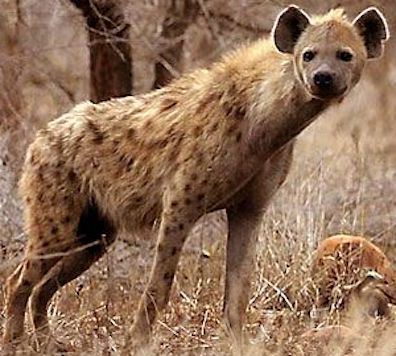A "Ghoul" is precisely what Stephen says it is in Telemachus,
a "Chewer of corpses." In the alchemy of his imagination, his
mother has changed from a dead body to a monster that feeds on
dead bodies. She returns under this guise in Circe,
and thoughts of corpses being consumed as food connect with
many other reflections on human mortality in the novel.
In ancient Bedouin folklore, the ghul was a wily
demonic creature that lived in desolate places, tricking human
beings who passed by and eating their flesh. It seems that
ghouls also sometimes ate bodies from graves, but this did not
become their central role until they entered western culture
through 18th century translations of One Thousand and One
Nights, a.k.a. Arabian Nights. (Joyce owned
an Italian translation of Le Mille e Una Notte when
he lived in Trieste.) One French translation in particular,
that of Antoine Galland (1704-1717), made ghouls into grave
robbers. Galland introduced into one of Sheherazade's stories
a character named Amina, who tricks a man named Sidi Nouman
into marrying her. When he notices that his bride eats nothing
but single grains of rice, he follows her out of the house one
night and sees her feasting with other ghouls in a cemetery.
Ghouls were shapeshifters in Arabic folklore, assuming the
form either of animals (often hyenas) or the human beings that
they had most recently eaten. Circe shows that Joyce
is aware of the tradition of animal-like ghouls eating the
dead and assuming their features: "The beagle
lifts his snout, showing the grey scorbutic face of Paddy
Dignam. He has gnawed all. He exhales a putrid
carcasefed breath. He grows to human size and shape. His
dachshund coat becomes a brown mortuary habit. His green eye
flashes bloodshot. Half of one ear, all the nose
and both thumbs are ghouleaten."
Reading retrospectively from this canine corpse-chewer, one
may wonder whether Bloom has glimpsed a ghoul in the "obese
grey rat" he sees crawling under a tombstone in Hades.
Bloom may not know the Arabic mythology that has captured
Stephen's imagination, but he certainly thinks of this "old
stager" as straddling the border between animal and human:
"One of those chaps would make short work of a fellow. Pick
the bones clean no matter who it was. Ordinary meat for them.
A corpse is meat gone bad. . . . Wonder does the news go
about whenever a fresh one is let down. Underground
communication. We learned that from them. Wouldn't be
surprised. Regular square feed for them."
Stephen has no doubt that his mother has entered a world of
corpse-chewing, animal-like specters. When she appears in Circe,
"her face worn and noseless," and urges him to repent his loss
of faith, he screams, "The ghoul! Hyena!"
Whether he thinks that his mother has become a monster, or
merely that one has eaten her flesh and assumed her shape,
hardly seems to matter. The lines between human and animal,
living and dead, nurturing and putrescing, have been erased,
in a vivid instance of what Julia Kristeva calls "the abject."
This Arabian thread in the book's manycolored tapestry
clearly ties into other reflections on mankind's mortal
condition: the continuity between human and animal lives
implied by "dogsbody," the
cannibalistic possibilities raised by seeing dead flesh as "potted meat," the conception
of God as a carnivore, the
transformations named by "metempsychosis."

